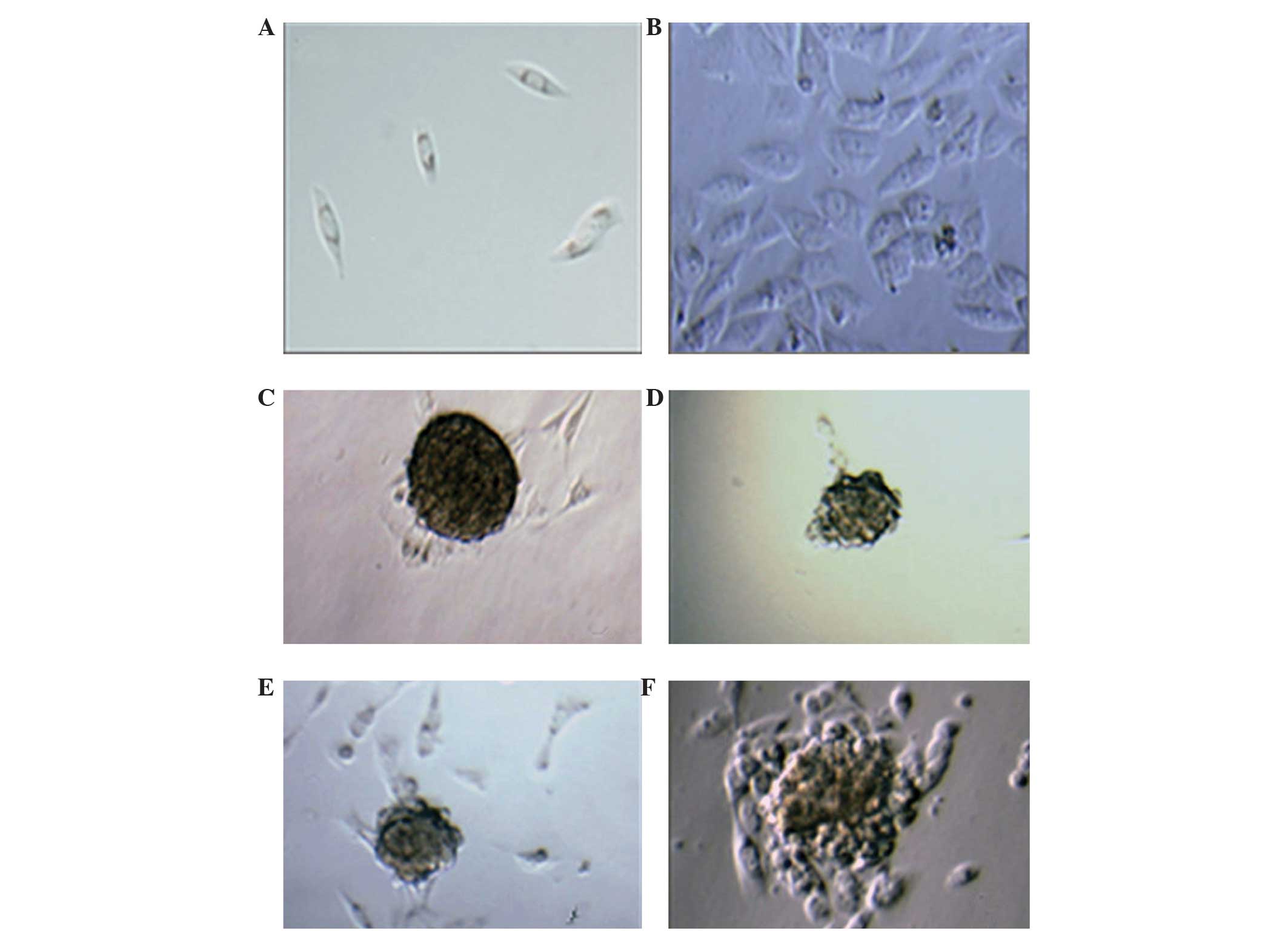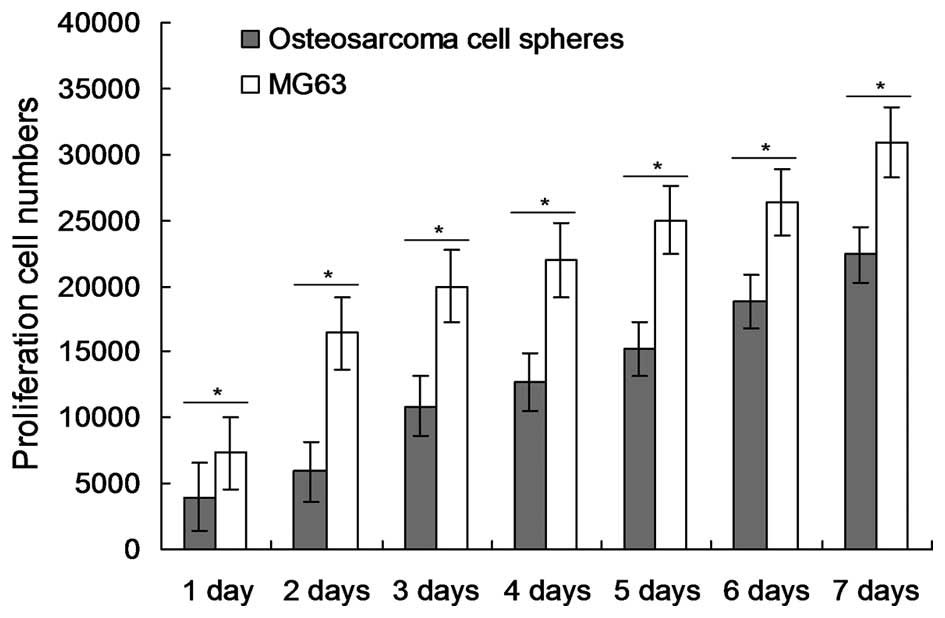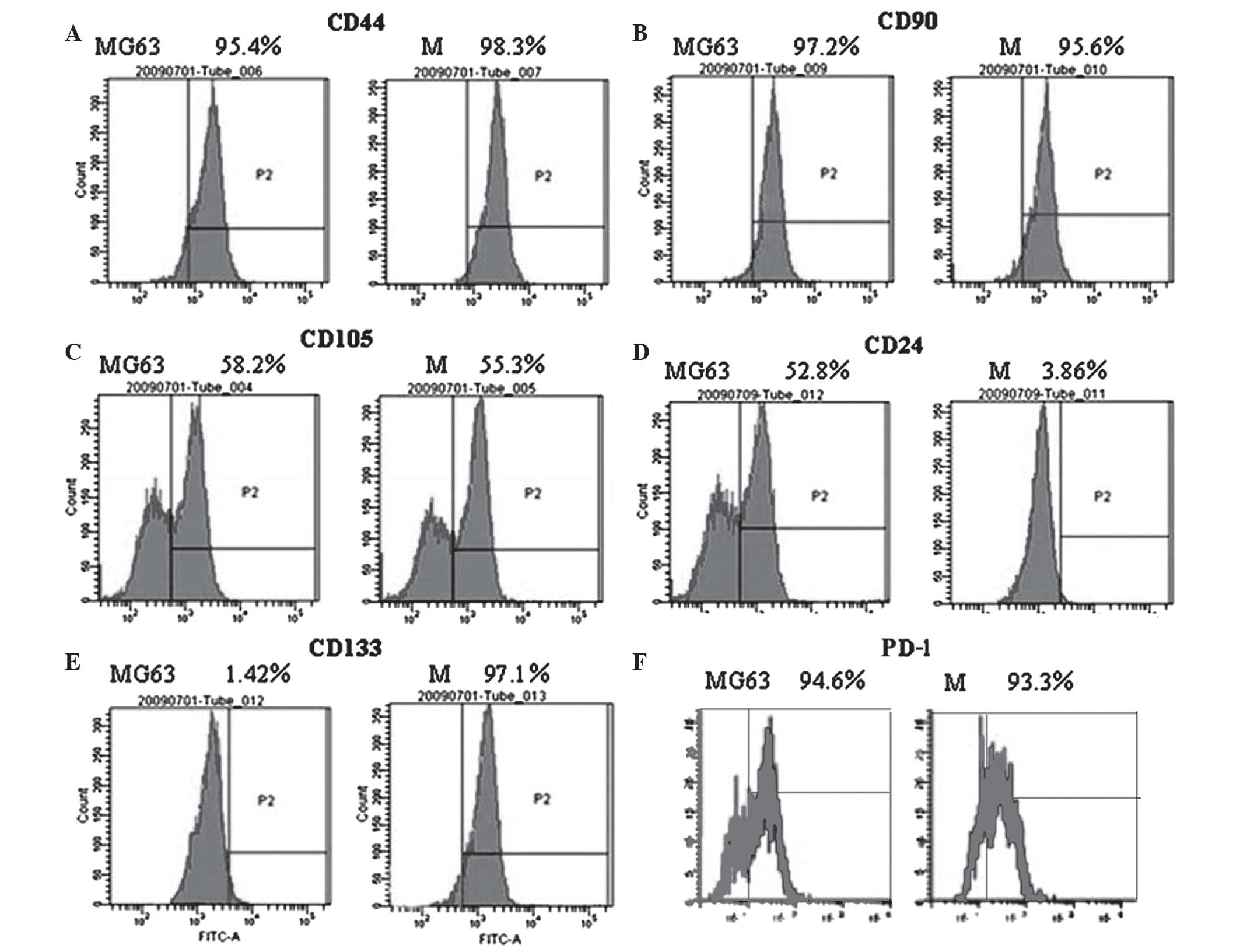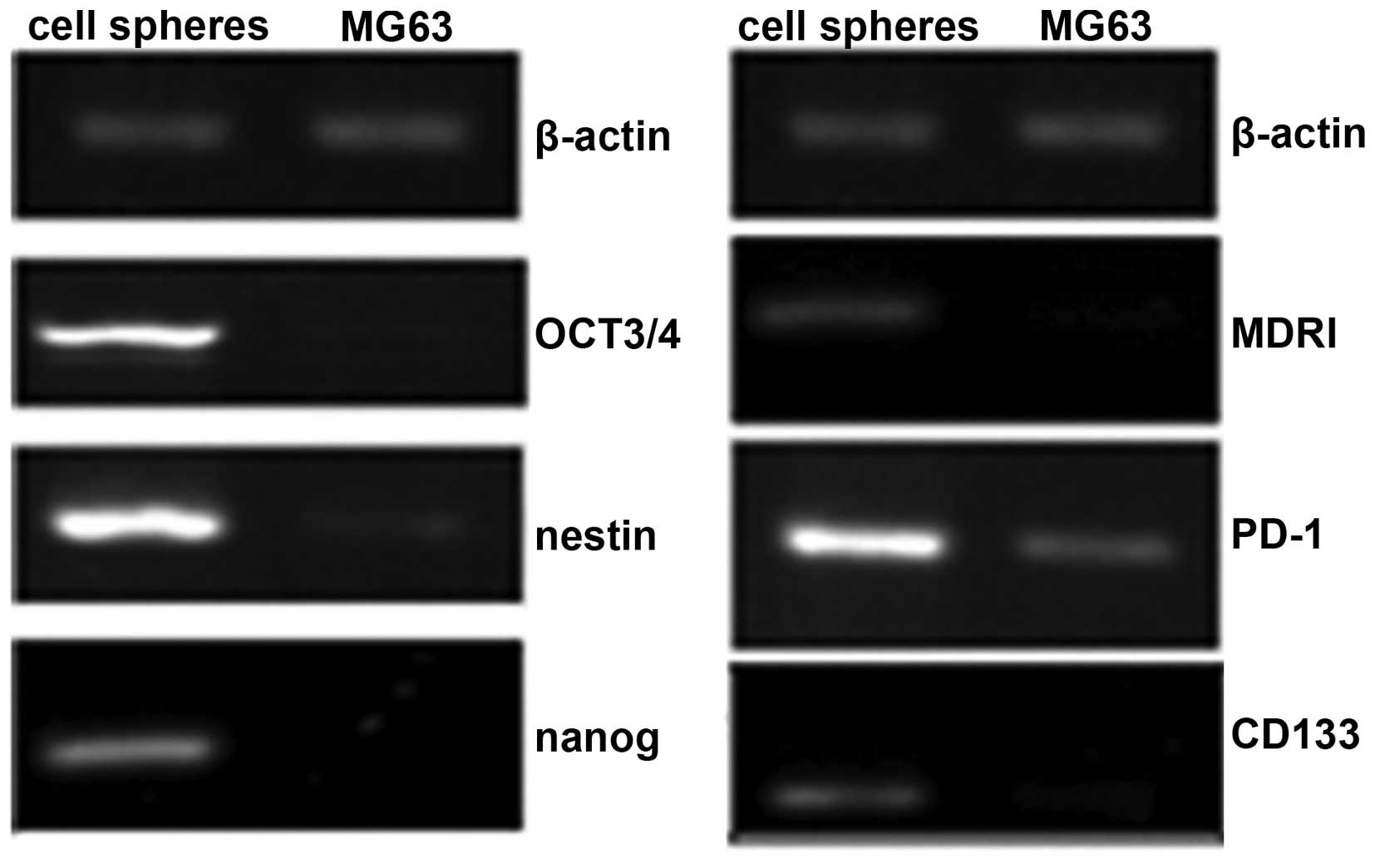|
1
|
Bai X, Meng H, Ma L and Guo A: Inhibitory
effects of evodiamine human osteosarcoma cell proliferation and
apoptosis. Oncol Lett. 9:801–805. 2015.PubMed/NCBI
|
|
2
|
Fleuren ED, Versleijen-Jonkers YM, Boerman
OC and van der Graaf WT: Targeting receptor tyrosine kinases in
osteosarcoma and Ewing sarcoma: Current hurdles and future
perspectives. Biochim Biophys Acta. 1845:266–276. 2014.PubMed/NCBI
|
|
3
|
Botter SM, Neri D and Fuchs B: Recent
advances in osteosarcoma. Curr Opin Pharmacol. 16:15–23. 2014.
View Article : Google Scholar : PubMed/NCBI
|
|
4
|
Siewe B, Wallace J, Rygielski S, Stapleton
JT, Martin J, Deeks SG and Landay A: Regulatory B cells inhibit
cytotoxic T lymphocyte (CTL) activity and elimination of infected
CD4 T cells after in vitro reactivation of HIV latent reservoirs.
PLoS One. 9:e929342014. View Article : Google Scholar : PubMed/NCBI
|
|
5
|
Xu P, Chen YJ, Chen H, Zhu XY, Song HF,
Cao LJ and Wang XF: The expression of programmed death-1 in
circulating CD4+ and CD8+ T cells during
hepatitis B virus infection progression and its correlation with
clinical baseline characteristics. Gut Liver. 8:186–195. 2014.
View Article : Google Scholar : PubMed/NCBI
|
|
6
|
Philip NH, Dillon CP, Snyder AG,
Fitzgerald P, Wynosky-Dolfi MA, Zwack EE, Hu B, Fitzgerald L,
Mauldin EA, Copenhaver AM, et al: Caspase-8 mediates caspase-1
processing and innate immune defense in response to bacterial
blockade of NF-kB and MAPK signaling. Proc Natl Acad Sci USA.
11:7385–7590. 2014. View Article : Google Scholar
|
|
7
|
Pedoeem A, Azoulay-Alfaguter I, Strazza M,
Silverman GJ and Mor A: Programmed death-1 pathway in cancer and
autoimmunity. Clin Immunol. 153:145–152. 2014. View Article : Google Scholar : PubMed/NCBI
|
|
8
|
Notaro A, Sabella S, Pellerito O, Di Fiore
R, De Blasio A, Calvaruso G and Giuliano M: Involvement of PAR-4 in
cannabinoid-dependent sensitization of osteosarcoma cells to
TRAIL-induced apoptosis. Int J Biol Sci. 10:466–478. 2014.
View Article : Google Scholar : PubMed/NCBI
|
|
9
|
Oba J, Nakahara T, Abe T, Hagihara A,
Moroi Y and Furue M: Expression of programmed death receptor ligand
1 in melanoma may indicate tumor progression and poor patient
survival. J Am Acad Dermatol. 70:954–956. 2014. View Article : Google Scholar : PubMed/NCBI
|
|
10
|
Mittendorf EA, Philips AV, Meric-Bernstam
F, Qiao N, Wu Y, Harrington S, Su X, Wang Y, Gonzalez-Angulo AM,
Akcakanat A, et al: PD-L1 expression in triple-negative breast
cancer. Cancer Immunol Res. 2:361–370. 2014. View Article : Google Scholar : PubMed/NCBI
|
|
11
|
Joseph RW, Parasramka M, Eckel-Passow JE,
Seri D, Wu K, Jiang L, Kalari K, Thompson RJ, Huu Ho T, Castle EP,
et al: Inverse association between programmed death ligand 1 and
genes in the VEGF pathway in primary clear cell renal cell
carcinoma. Cancer Immunol Res. 1:378–385. 2013. View Article : Google Scholar : PubMed/NCBI
|
|
12
|
Macfarlane AW IV, Jillab M, Plimack ER,
Hudes GR, Uzzo RG, Litwin S, Dulaimi E, Al-Saleem T and Campbell
KS: PD-1 expression on peripheral blood cells increases with stage
in renal cell carcinoma patients and is rapidly reduced after
surgical tumor resection. Cancer Immunol Res. 2:320–331. 2014.
View Article : Google Scholar : PubMed/NCBI
|
|
13
|
Flies DB, Han X, Higuchi T, Zheng L, Sun
J, Ye JJ and Chen L: Coinhibitory receptor PD-1H preferentially
suppresses CD4+ T cell-mediated immunity. J Clin Invest.
124:1966–1975. 2014. View
Article : Google Scholar : PubMed/NCBI
|
|
14
|
Barker CA and Postow MA: Combinations of
radiation therapy and immunotherapy for melanoma: A review of
clinical outcomes. Int J Radiat Oncol Biol Phys. 88:986–997. 2014.
View Article : Google Scholar : PubMed/NCBI
|
|
15
|
Tosti G, Cocorocchio E and Pennacchioli E:
Anti-cytotoxic T lymphocyte antigen-4 antibodies in melanoma. Clin
Cosmet Investig Dermatol. 6:245–256. 2013.PubMed/NCBI
|
|
16
|
Feng D, Yang X, Li S, Liu T, Wu Z, Song Y,
Wang J, Gao W, Huang Q, Huang W, et al: Cytotoxic T-lymphocyte
antigen-4 genetic variants and risk of Ewing's sarcoma. Genet Test
Mol Biomarkers. 17:458–463. 2013. View Article : Google Scholar : PubMed/NCBI
|
|
17
|
Liu Y, He Z, Feng D, Shi G, Gao R, Wu X,
Song W and Yuan W: Cytotoxic T-lymphocyte antigen-4 polymorphisms
and susceptibility to osteosarcoma. DNA Cell Biol. 30:1051–1055.
2011. View Article : Google Scholar : PubMed/NCBI
|
|
18
|
Wang W, Wang J, Song H, Liu J, Song B and
Cao X: Cytotoxic T-lymphocyte antigen-4+ 49G/A
polymorphism is associated with increased risk of osteosarcoma.
Genet Test Mol Biomarkers. 15:503–506. 2011. View Article : Google Scholar : PubMed/NCBI
|
|
19
|
Yang S, Wang C, Zhou Y, Sun G, Zhu D and
Gao S: Cytotoxic T-lymphocyte antigen-4 polymorphisms and
susceptibility to Ewing's sarcoma. Genet Test Mol Biomarkers.
16:1236–1240. 2012. View Article : Google Scholar : PubMed/NCBI
|
|
20
|
Shang Y, Li Z, Li H, Xia H and Lin Z:
TIM-3 expression in human osteosarcoma: Correlation with the
expression of epithelial-mesenchymal transition-specific
biomarkers. Oncol Lett. 6:490–494. 2013.PubMed/NCBI
|
|
21
|
Ramsay AG: Immune checkpoint blockade
immunotherapy to activate anti-tumour T-cell immunity. Br J
Haematol. 162:313–325. 2013. View Article : Google Scholar : PubMed/NCBI
|
|
22
|
Ott PA, Hodi FS and Robert C: CTLA-4 and
PD-1/PDL1 blockade: New immunotherapeutic modalities with durable
clinical benefit in melanoma patients. Clin Cancer Res.
19:5300–5309. 2013. View Article : Google Scholar : PubMed/NCBI
|
|
23
|
Okazaki T, Chikuma S, Iwai Y, Fagarasan S
and Honjo T: A rheostat for immune responses: The unique properties
of PD-1 and their advantages for clinical application. Nat Immunol.
14:1212–1218. 2013. View
Article : Google Scholar : PubMed/NCBI
|
|
24
|
Pan XC, Li L, Mao JJ, Yao W, Zheng JN, Liu
M and Fu JJ: Synergistic effects of soluble PD-1 and IL-21 on
antitumor immunity against H22 murine hepatocellular carcinoma.
Oncol Lett. 5:90–96. 2013.PubMed/NCBI
|


















